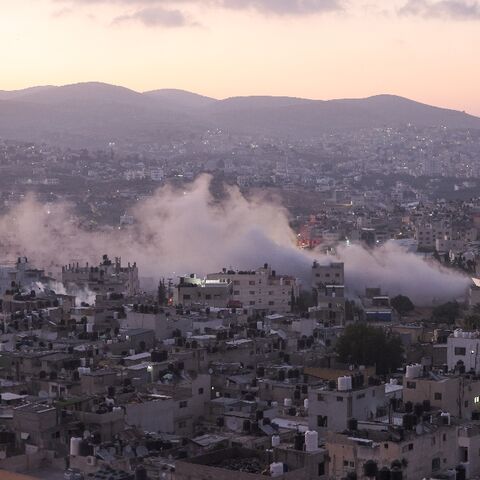More than 3,000 United States military personnel have arrived in the Red Sea aboard two warships, part of a beefed up response from Washington after tanker seizures by Iran, the US Navy said Monday.
The deployment adds to a growing US military buildup in tense Gulf waterways vital to the global oil trade and led Tehran on Monday to accuse the US of inflaming regional instability.
The US military says Iran has either seized or attempted to take control of nearly 20 internationally flagged ships in the region over the past two years.
The US sailors and Marines entered the Red Sea on Sunday after transiting through the Suez Canal in a pre-announced deployment, the US Navy's Fifth Fleet said in a statement.
They arrived on board the USS Bataan and USS Carter Hall warships, providing "greater flexibility and maritime capability" to the Fifth Fleet, the statement from the Bahrain-based command added.
The deployment adds to efforts "to deter destabilising activity and de-escalate regional tensions caused by Iran's harassment and seizures of merchant vessels," Fifth Fleet spokesman Commander Tim Hawkins told AFP.
USS Bataan is an amphibious assault ship which can carry fixed-wing and rotary aircraft as well as landing craft. The USS Carter Hall, a dock landing ship, transports Marines, their gear, and lands them ashore.
In a Monday news conference, Iran's foreign ministry spokesman Nasser Kanani said US deployments are only serving Washington's interests.
"The US government's military presence in the region has never created security. Their interests in this region have always compelled them to fuel instability and insecurity," he told reporters.
"We are deeply convinced that the countries of the Persian Gulf are capable of ensuring their own security."
The spokesman for Iran's Revolutionary Guards, Ramazan Sharif, meanwhile said the Islamic republic "has reached a level of strength and power that can reciprocate any vicious act by the US, such as seizing ships", according to state news agency IRNA.
- 'New approach' -
The latest deployment comes after Washington said its forces blocked two attempts by Iran to seize commercial tankers in international waters off Oman on July 5.
The maritime services in Iran said one of the two tankers, the Bahamian-flagged Richmond Voyager, had collided with an Iranian vessel, seriously injuring five crew members, according to IRNA.
In April and early May, Iran seized two oil tankers within a week in regional waters.
Those incidents came after Israel and the United States blamed Iran in November for what they said was a drone strike against a tanker operated by an Israeli-owned firm off the coast of Oman.
The US announced last month that it would deploy a destroyer, F-35 and F-16 warplanes, along with the Amphibious Readiness Group/Marine Expeditionary Unit, to the Middle East to deter Iran from seizing ships in the Gulf.
Last week, a US official told AFP that Washington is also preparing to put Marines and Navy personnel aboard commercial tankers transiting the Gulf as an added layer of defence.
Washington's stepped-up military response comes at a time of deepening engagement between the region and China, which brokered a shock detente between Gulf rivals Saudi Arabia and Iran in March.
Tehran's relations with other Gulf Arab states are also growing. The president of the United Arab Emirates and Kuwait's foreign minister were both offered invitations to visit the Islamic republic last week.
"Security will remain a friction point in US-Gulf relations even if the threat posed by Iranian attacks against shipping eases in the short term," said Torbjorn Soltvedt of the risk intelligence firm Verisk Maplecroft.
"The perception that the US isn't doing enough to deter Iranian attacks against international shipping will persist," he told AFP.
"The need for a new approach is evident".






